Minnesota’s 20 hummingbird plants offer a delightful variety of nectar-rich flowers to attract these beautiful creatures. However, it’s crucial to choose plants that can withstand and flourish in the local weather conditions. Extreme temperatures, whether too hot or too cold, can be detrimental to their survival and hinder the growth of the flowers they rely on for nectar collection.
To navigate these conditions, the United States Department of Agriculture (USDA) has developed a plant hardiness zone map, dividing the country into 13 zones based on average minimum temperatures. Each state also encompasses different zones. Understanding the suitable zones for plant growth is essential as plants thrive differently based on their zone’s minimum temperature tolerance.
Minnesota experiences cold winters and warm summers. The northern part lies in hardiness zone 3, while most of the southern region falls within zone 4, except for a small area in zone 5.
Considering the heat factor, the American Horticultural Society has created a plant heat-zone map, indicating the number of days an area experiences temperatures exceeding 86 degrees Fahrenheit. Minnesota is classified within heat zones 3 to 5, which generally indicates a favorable range for most plants. However, it’s the cold winters that pose more challenges for hummingbird plants in Minnesota.
To ensure that the listed plants for hummingbirds in Minnesota are suitable, they have been carefully examined based on their compatibility with the cold and heat zones in the state. These plants not only possess stunning nectar-rich flowers that hummingbirds adore but also thrive in Minnesota’s unique weather conditions.
It’s worth noting that plants listed under the cold zones 4-5 may struggle to survive the colder winters in zone 3 without protective measures. Therefore, it’s recommended to incorporate as many of these flowers as possible to attract hummingbirds in Minnesota.
Now, let’s explore some of the marvelous hummingbird plants suitable for Minnesota’s Hardiness Zone 3:
1. Nasturtiums
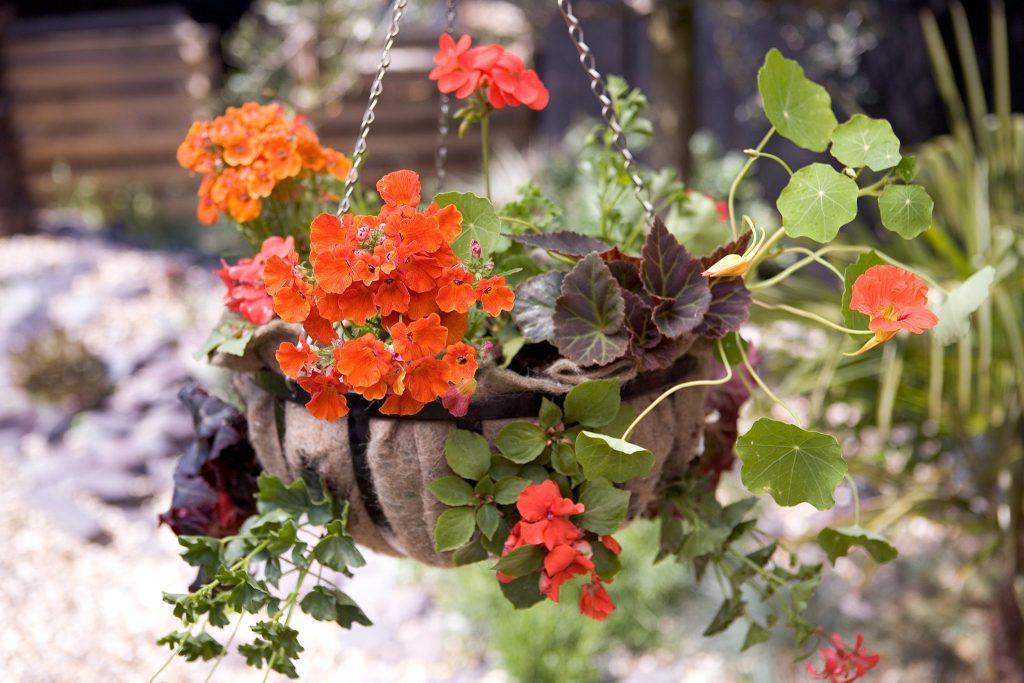
These trailing edible flowers, scientifically known as Tropaeolums, are ideal for creating hanging baskets that hummingbirds will adore. Their deep flowers and rich nectar make them irresistible to these birds. Nasturtiums are usually grown as annuals, with trailing and bush types available. Sow the seeds outdoors just after the last frosts, ensuring they receive watering during the growing season and regular deadheading.
– Growing Zones: 2 – 11
– Sun: Full
– Soil: Well-drained
– Colors: Red, orange, yellow, pink
– Height: 1 – 10 feet
– Spread: 1 – 3 feet
– Plant Type: Annual
2. Zinnia

Zinnias are vibrant flowering shrubs native to North American scrub and dry grasslands. Belonging to the Asteraceae family, specifically the sunflower tribe (Heliantheae), they exhibit three main types based on their petal structure: single-flowered, double-flowered, and semi-double-flowered. The Zinnia elegans, renowned for its tall stems and bright colors, is a classic choice that attracts butterflies and hummingbirds. These plants are relatively easy to grow; it’s best to sow the seeds directly in the desired location, as they do not transplant well. Once established, they thrive in full sun and well-draining soil, offering a profusion of blooms from early summer to frost.
– Growing Zones: Annuals in 2-8, Perennials in 9-11
– Sun: Full sun
– Soil: Neutral to slightly alkaline, well-draining
– Colors: White, yellow, orange, pink, red, purple
– Height: 1 – 4 feet tall
– Spread: 12 – 18 feet wide
– Plant Type: Annual, Perennial Shrubs
3. Agastache
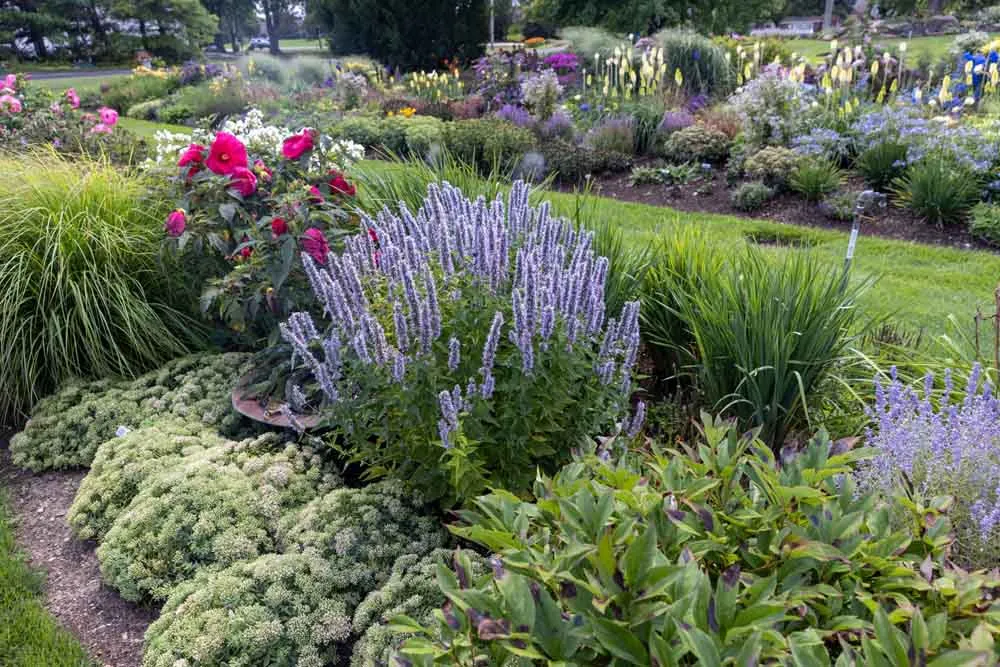
Agastache, commonly known as “hummingbird mints” and “Giant hyssops,” are aromatic herbaceous perennials native to North America. The vibrant purple and red flowers, composed of clusters of tiny flowers, are highly attractive to hummingbirds. To cultivate Agastache flowers successfully, start them indoors as plants in May and then transplant them into flower beds during the summer. They require full sun and regular watering initially to establish themselves. Once established, they become drought-tolerant and don’t require excessive watering. These desert plants can endure even the hottest days, so avoid overwatering to prevent root rot.
– Growing Zones: 3 – 10
– Sun: Full Sun
– Soil: Lean soil, well-drained
– Colors: Blue, purple, red, orange, pink, and white
– Height: 3 to 5 feet tall
– Spread: Varies
– Plant Type: Herbaceous perennial
4. Morning Glory
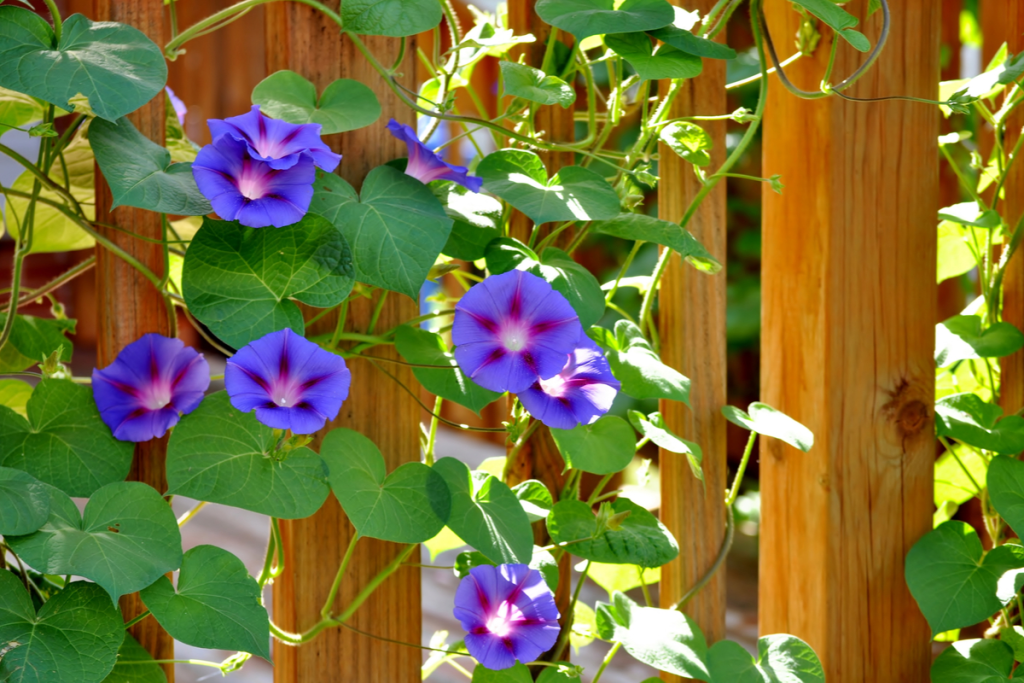
Morning Glory is a captivating name given to over 1,000 species of flowering plants in the Convolvulaceae family. These plants derive their name from their early morning blooming routine, which ceases as the day progresses. While some Morning Glory species bloom during the day, like Ipomoea purpurea, others, such as Ipomoea alba, bloom at night. Morning Glory flowers are renowned for their bright and colorful blooms, fast-growing vines, and tolerance for poor and dry soils. It’s important to note that Morning Glories can be invasive if not properly maintained, and their seeds are toxic if ingested.
– Common Name: Morning Glory, common morning glory
– Scientific Name: Convolvulaceae family
– Growing Zones: 2 – 11
– Sun: Full sun
– Soil: Moist, well-draining
– Colors: White, pink, purple, blue
– Height: 6 – 10 feet tall
– Spread: 3 – 6 feet wide
– Plant Type: Annual
5. Impatiens
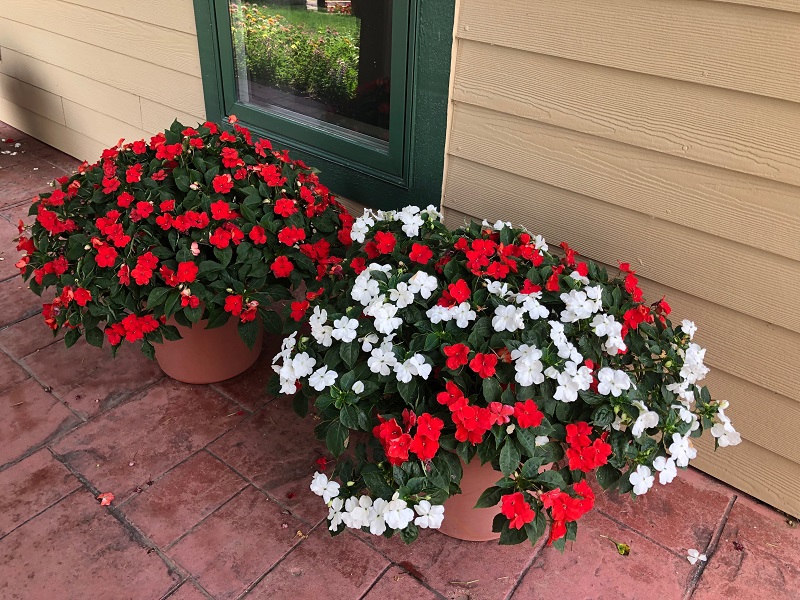
Impatiens, vibrant annuals, add a splash of color to dark and shady areas, attracting hummingbirds. These plants thrive in moist and well-draining soil, making them ideal for hanging baskets on porches. While they are usually grown from nursery-bought plants and planted closely together to create dense mats of flowers and leaves, they can also be grown from seeds indoors. Impatiens require watering during the growing season and benefit from deadheading.
– Common Name: Impatiens, jewelweed, touch-me-not, snapweed, patience
– Scientific Name: Impatiens
– Growing Zones: 2 – 11
– Sun: Shade or partial shade
– Soil: Rich, well-draining
– Colors: Red, pink, purple, yellow, coral
– Height: 6 – 36 inches
– Spread: 1 – 3 feet
– Plant Type: Annual
6. Bee Balm (Monarda)
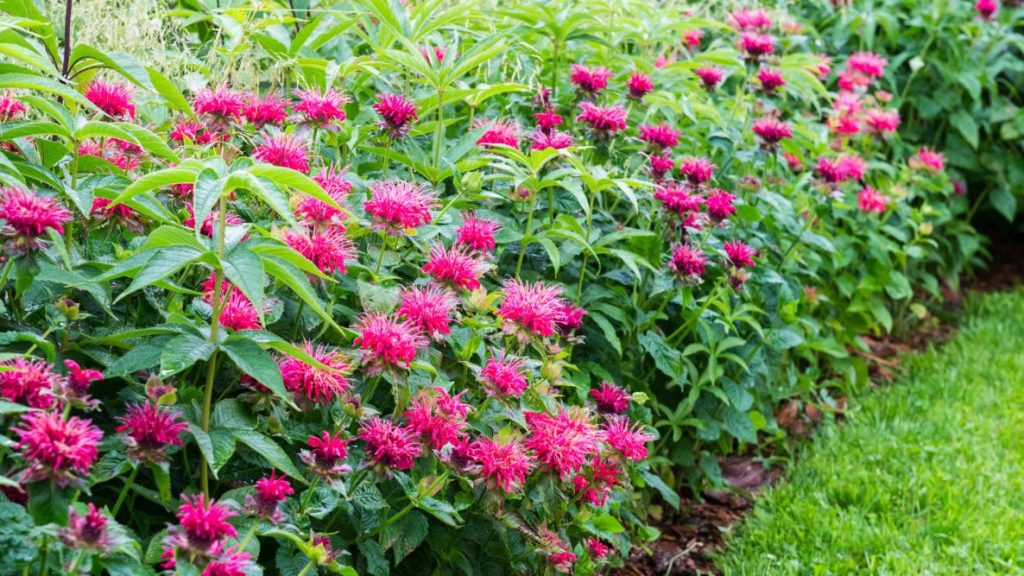
Also known as Bergamot, Bee Balm is a perennial flower that attracts hummingbirds, bees, and butterflies with its vibrant blooms. It features showy, tubular flowers in various shades of red, pink, and purple. Bee Balm thrives in moist, well-draining soil and prefers full sun to partial shade. It’s important to provide adequate air circulation to prevent powdery mildew, a common issue with this plant.
– Common Name: Bee Balm, Bergamot
– Scientific Name: Monarda
– Growing Zones: 3 – 9
– Sun: Full sun to partial shade
– Soil: Moist, well-draining
– Colors: Red, pink, purple
– Height: 2 – 4 feet
– Spread: 1 – 3 feet
– Plant Type: Perennial
7. Cardinal Flower (Lobelia cardinalis)
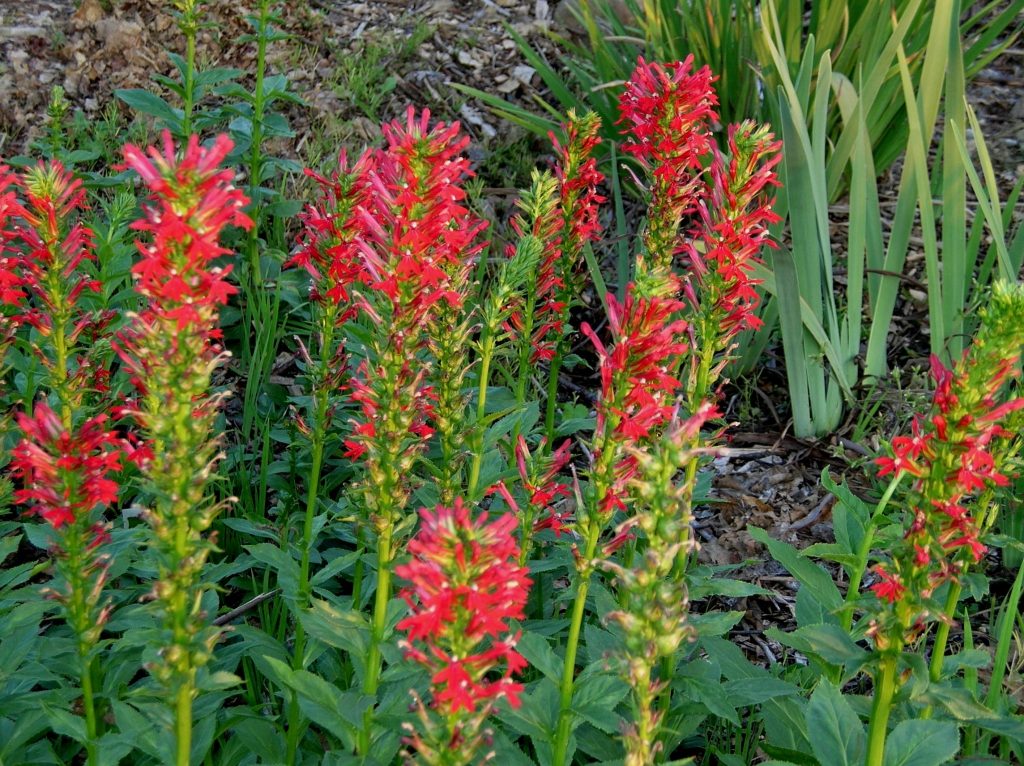
Cardinal Flower is a stunning native perennial known for its vibrant red flowers that resemble the plumage of a cardinal bird. It thrives in moist to wet soil, making it an excellent choice for rain gardens or along streams and ponds. Cardinal Flowers prefer partial shade and attract hummingbirds with their long tubular blooms.
– Common Name: Cardinal Flower
– Scientific Name: Lobelia cardinalis
– Growing Zones: 3 – 9
– Sun: Partial shade
– Soil: Moist to wet, well-draining
– Colors: Red
– Height: 2 – 4 feet
– Spread: 1 – 2 feet
– Plant Type: Perennial
8. Coral Bells (Heuchera)
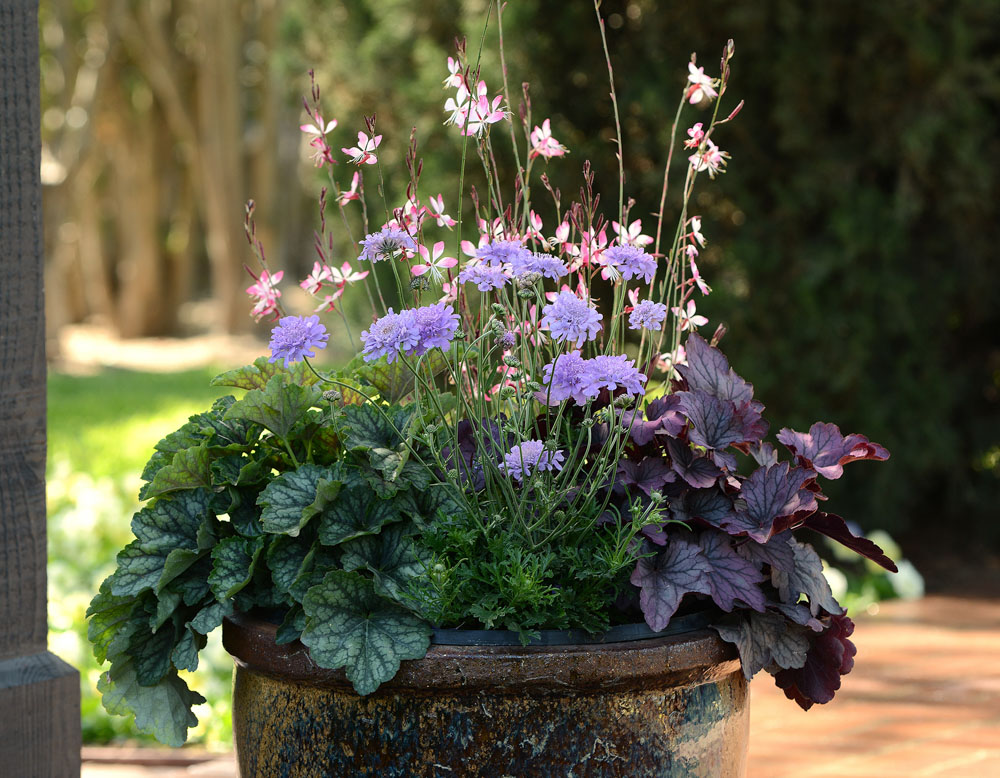
Coral Bells are perennial plants valued for their attractive foliage and delicate, bell-shaped flowers. They come in a variety of colors, including shades of pink, red, purple, and green. Coral Bells prefer partial shade and well-draining soil. While the flowers themselves may not be the primary attraction for hummingbirds, the nectar they produce can be an additional food source.
– Common Name: Coral Bells
– Scientific Name: Heuchera
– Growing Zones: 3 – 8
– Sun: Partial shade to full shade
– Soil: Well-draining
– Colors: Various (pink, red, purple, green)
– Height: 1 – 2 feet
– Spread: 1 – 2 feet
– Plant Type: Perennial
9. Columbine (Aquilegia)
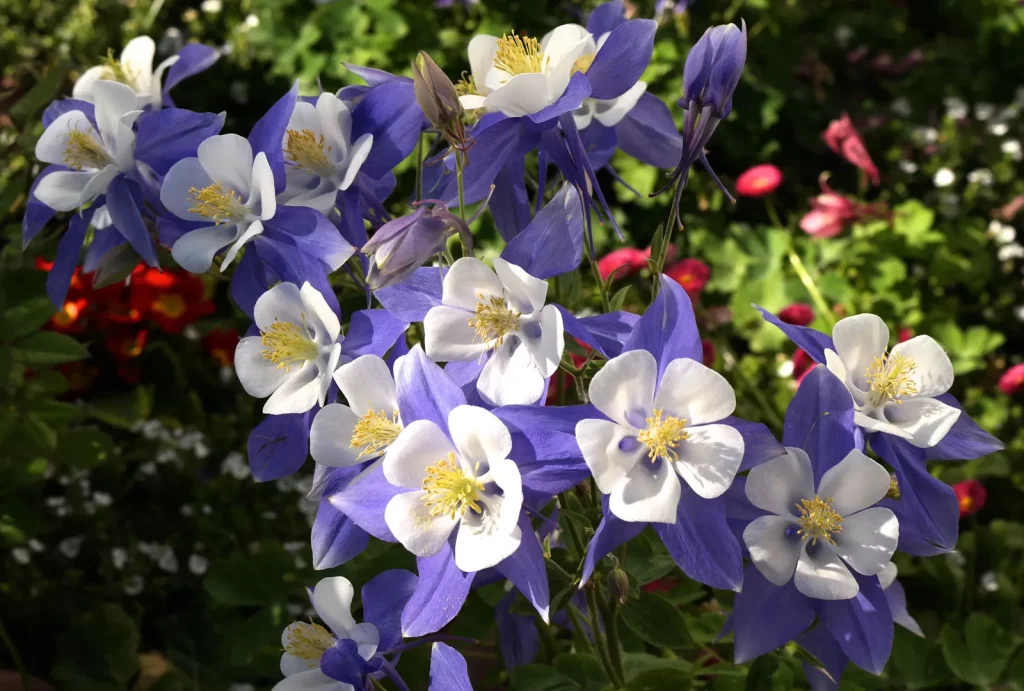
Columbine is a perennial flower that displays distinctive bell-shaped flowers in various colors, often with contrasting petals and spurs. These plants thrive in well-draining soil and prefer partial shade. Columbine flowers are known to attract hummingbirds with their nectar-filled spurs.
– Common Name: Columbine
– Scientific Name: Aquilegia
– Growing Zones: 3 – 9
– Sun: Partial shade to full sun
– Soil: Well-draining
– Colors: Various (red, pink, yellow, blue, white)
– Height: 1 – 3 feet
– Spread: 1 – 2 feet
– Plant Type: Perennial
10. Foxglove (Digitalis purpurea)
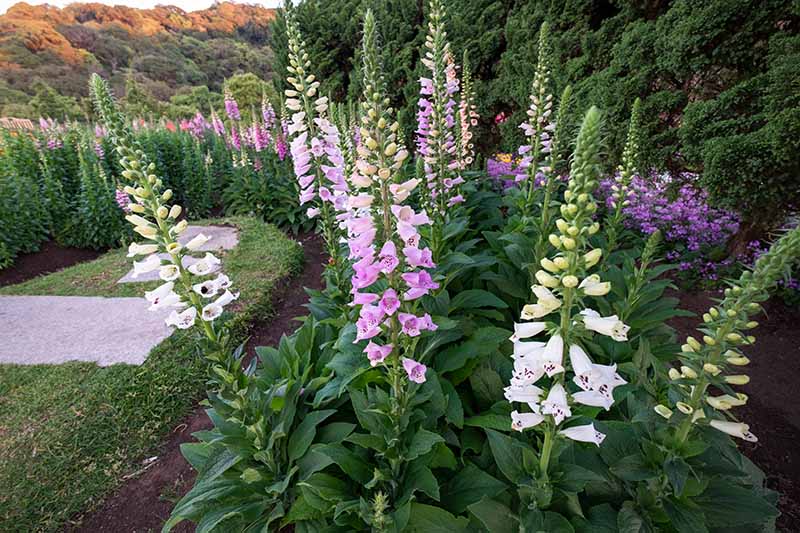
Foxglove is a biennial or short-lived perennial known for its tall spikes of tubular flowers. The flowers are often speckled or marked with contrasting colors, and they attract hummingbirds and bees. Foxgloves prefer partial shade and well-draining soil. It’s important to note that while the flowers are attractive to hummingbirds, all parts of the plant are toxic if ingested, so caution is advised if you have pets or children.
– Common Name: Foxglove
– Scientific Name: Digitalis purpurea
– Growing Zones: 4 – 8
– Sun: Partial shade to full sun
– Soil: Well-draining
– Colors: Various (pink, purple, white, yellow)
– Height: 2 – 5 feet
– Spread: 1 – 2 feet
– Plant Type: Biennial or short-lived perennial
11. Honeysuckle (Lonicera)

Honeysuckle is a woody vine or shrub that produces fragrant, tubular flowers that are highly attractive to hummingbirds. It comes in various species, including the native trumpet honeysuckle (Lonicera sempervirens), which features bright red or orange-red flowers. Honeysuckle prefers full sun to partial shade and well-draining soil.
– Common Name: Honeysuckle
– Scientific Name: Lonicera
– Growing Zones: Varies by species
– Sun: Full sun to partial shade
– Soil: Well-draining
– Colors: Various (red, orange, yellow, pink, white)
– Height: Varies by species
– Spread: Varies by species
– Plant Type: Vine or shrub
12. Salvia (Salvia spp.)
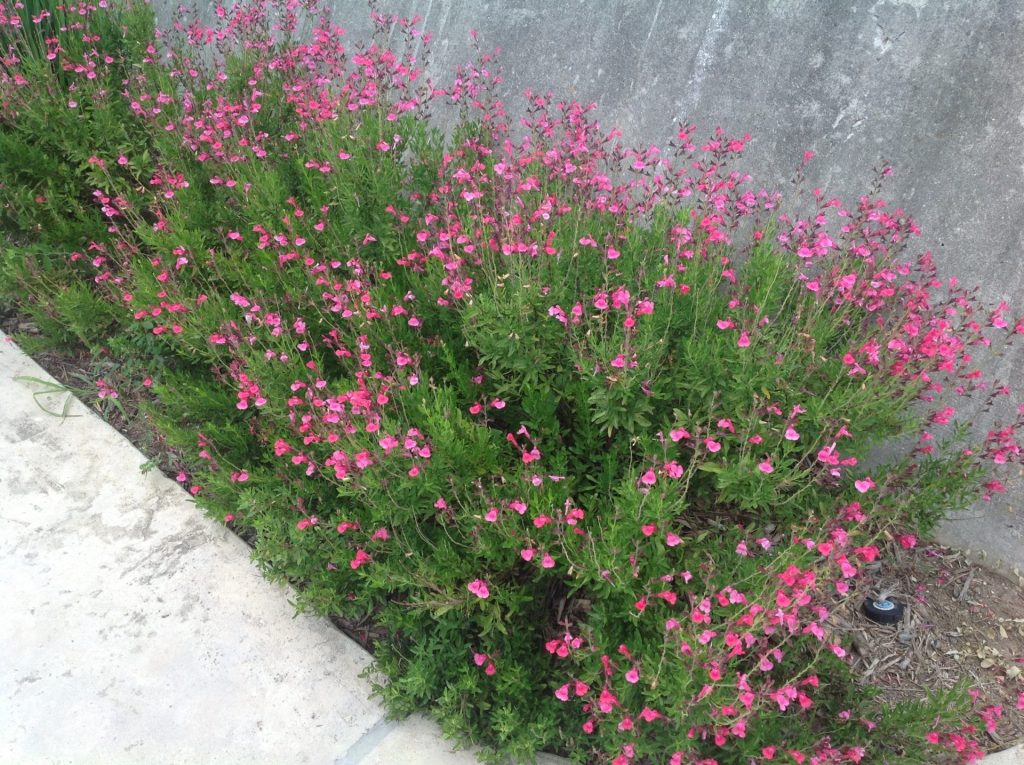
Salvia is a diverse group of perennial plants that includes many species known for their vibrant, nectar-rich flowers. These flowers often feature tubular shapes that are ideal for attracting hummingbirds. Salvia plants come in various colors, including shades of red, purple, pink, and blue. They prefer full sun and well-draining soil.
– Common Name: Salvia
– Scientific Name: Salvia spp.
– Growing Zones: Varies by species
– Sun: Full sun
– Soil: Well-draining
– Colors: Various (red, purple, pink, blue)
– Height: Varies by species
– Spread: Varies by species
– Plant Type: Perennial
13. Trumpet Vine (Campsis radicans)
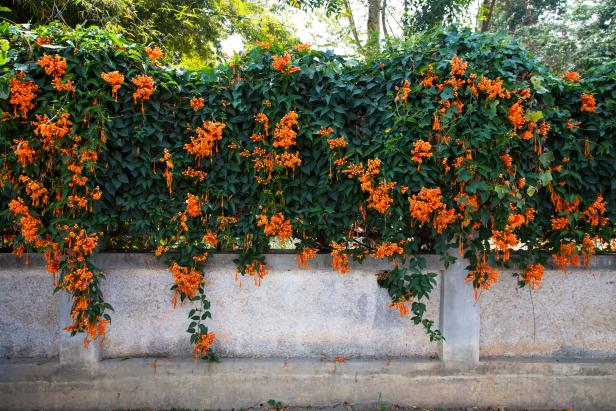
Trumpet Vine is a vigorous, deciduous vine that produces large, trumpet-shaped flowers in shades of orange or red. The flowers are known for their attractiveness to hummingbirds. Trumpet Vine prefers full sun and well-draining soil. Due to its vigorous growth habit, it’s important to provide adequate support and space for this vine.
– Common Name: Trumpet Vine
– Scientific Name: Campsis radicans
– Growing Zones: 4 – 9
– Sun: Full sun
– Soil: Well-draining
– Colors: Orange, red
– Height: Up to 40 feet
– Spread: Up to 30 feet
– Plant Type: Vine
14. Lantana (Lantana camara)
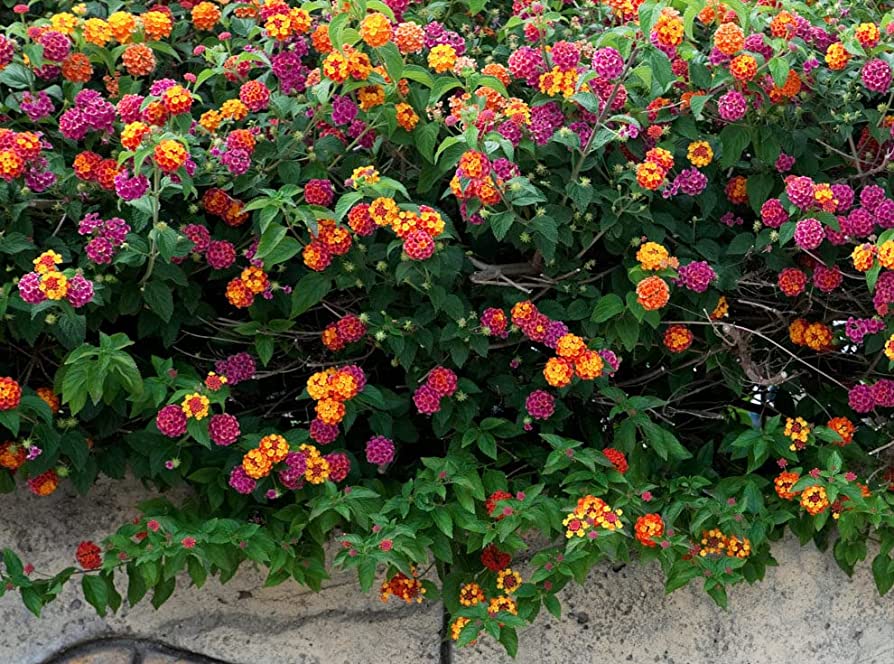
Lantana is a flowering plant often grown as an annual or tender perennial. It produces clusters of small, colorful flowers that are highly attractive to hummingbirds and butterflies. Lantana comes in various colors, including shades of red, orange, yellow, and pink. It thrives in full sun and well-draining soil.
– Common Name: Lantana
– Scientific Name: Lantana camara
– Growing Zones: 8 – 11 (often grown as an annual in colder zones)
– Sun: Full sun
– Soil: Well-draining
– Colors: Various (red, orange, yellow, pink)
– Height: 1 – 4 feet
– Spread: 1 – 4 feet
– Plant Type: Annual or tender perennial
15. Red Hot Poker (Kniphofia)
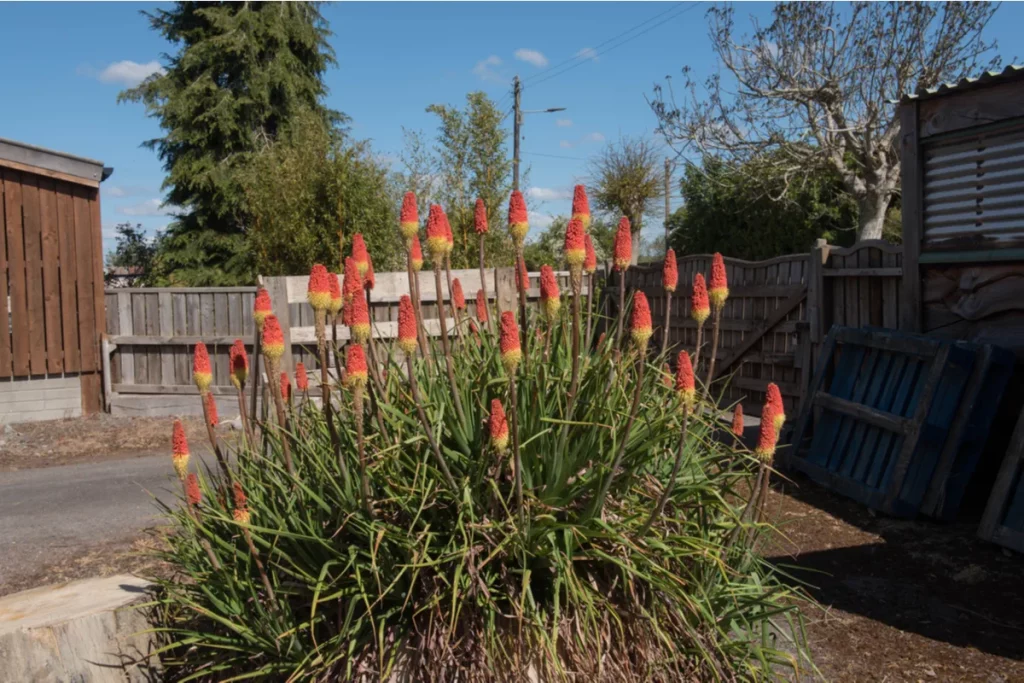
Red Hot Poker, also known as Torch Lily, is a striking perennial plant known for its tall flower spikes that resemble fiery torches. The tubular flowers are usually red, orange, or yellow and are highly attractive to hummingbirds. Red Hot Poker prefers full sun and well-draining soil.
– Common Name: Red Hot Poker, Torch Lily
– Scientific Name: Kniphofia
– Growing Zones: 5 – 9
– Sun: Full sun
– Soil: Well-draining
– Colors: Red, orange, yellow
– Height: 2 – 5 feet
– Spread: 1 – 3 feet
– Plant Type: Perennial
16. Bee Balm (Monarda)
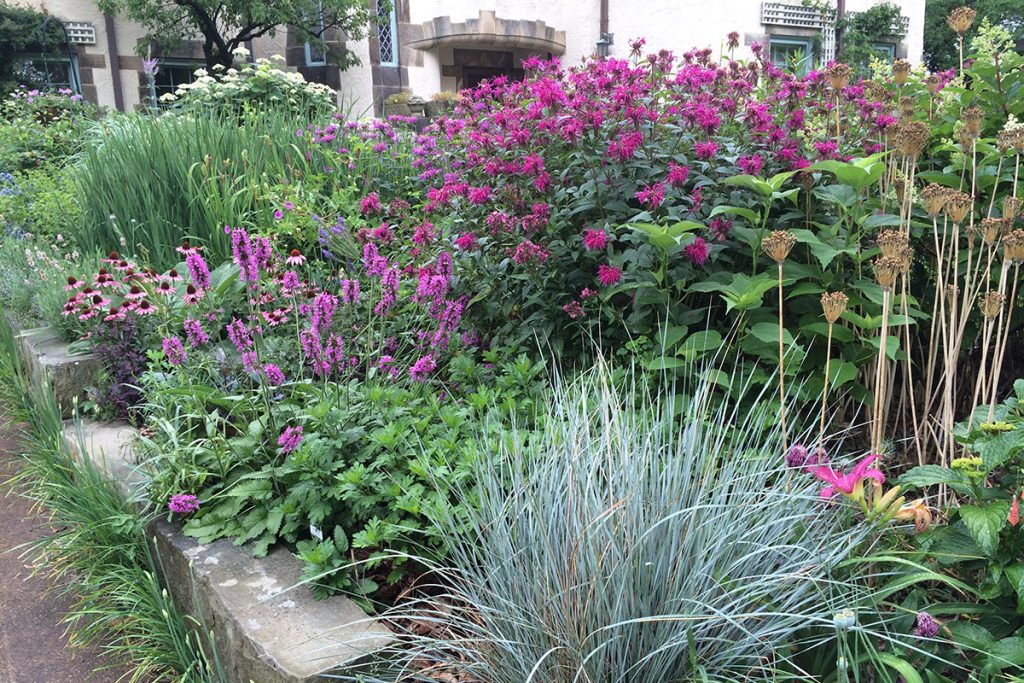
Bee Balm is a perennial herbaceous plant that produces clusters of tubular flowers in shades of red, pink, purple, or white. The flowers are highly attractive to hummingbirds and bees. Bee Balm prefers full sun to partial shade and moist, well-draining soil.
– Common Name: Bee Balm
– Scientific Name: Monarda
– Growing Zones: 4 – 9
– Sun: Full sun to partial shade
– Soil: Moist, well-draining
– Colors: Red, pink, purple, white
– Height: 2 – 4 feet
– Spread: 1 – 3 feet
– Plant Type: Perennial
17. Coral Bells (Heuchera)
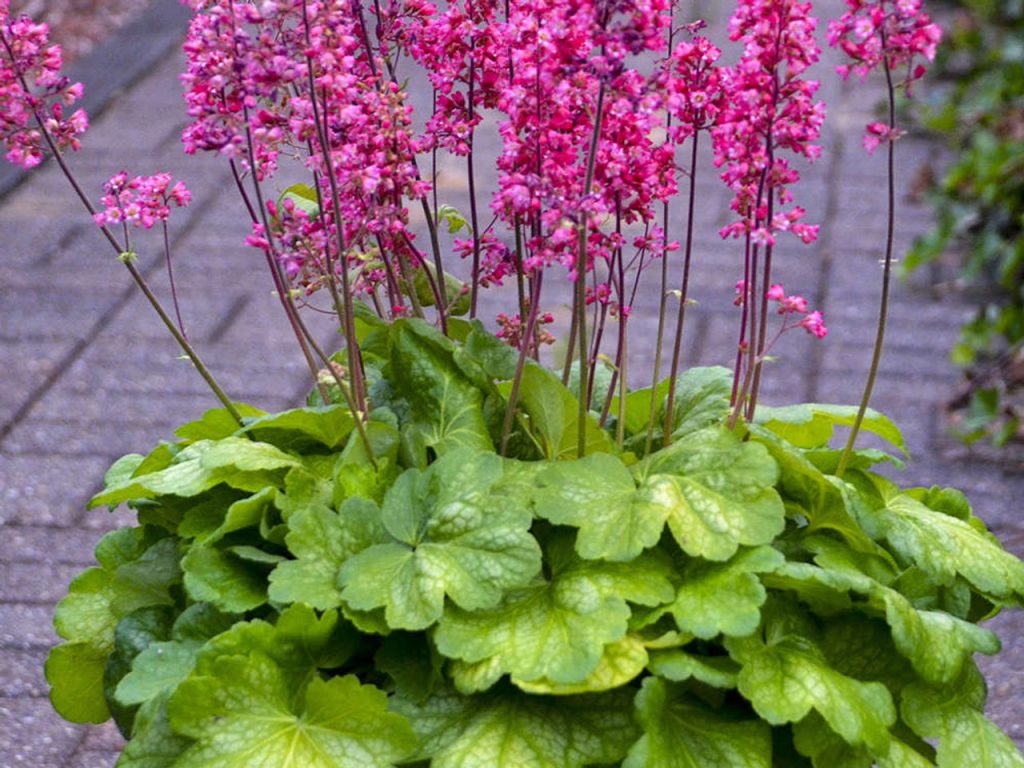
Coral Bells are herbaceous perennial plants that feature attractive foliage and delicate, bell-shaped flowers on slender stalks. The flowers come in various colors, including shades of red, pink, and white. Coral Bells prefer partial shade and moist, well-draining soil.
– Common Name: Coral Bells
– Scientific Name: Heuchera
– Growing Zones: Varies by species
– Sun: Partial shade
– Soil: Moist, well-draining
– Colors: Various (red, pink, white)
– Height: Varies by species
– Spread: Varies by species
– Plant Type: Perennial
18. Columbine (Aquilegia)

Columbine is a perennial plant known for its unique, bell-shaped flowers that come in a wide range of colors, including shades of red, pink, yellow, and blue. The flowers often feature contrasting spurs and attract hummingbirds with their nectar. Columbine prefers partial shade and well-draining soil.
– Common Name: Columbine
– Scientific Name: Aquilegia
– Growing Zones: Varies by species
– Sun: Partial shade
– Soil: Well-draining
– Colors: Various (red, pink, yellow, blue)
– Height: Varies by species
– Spread: Varies by species
– Plant Type: Perennial
19. Hollyhock (Alcea)
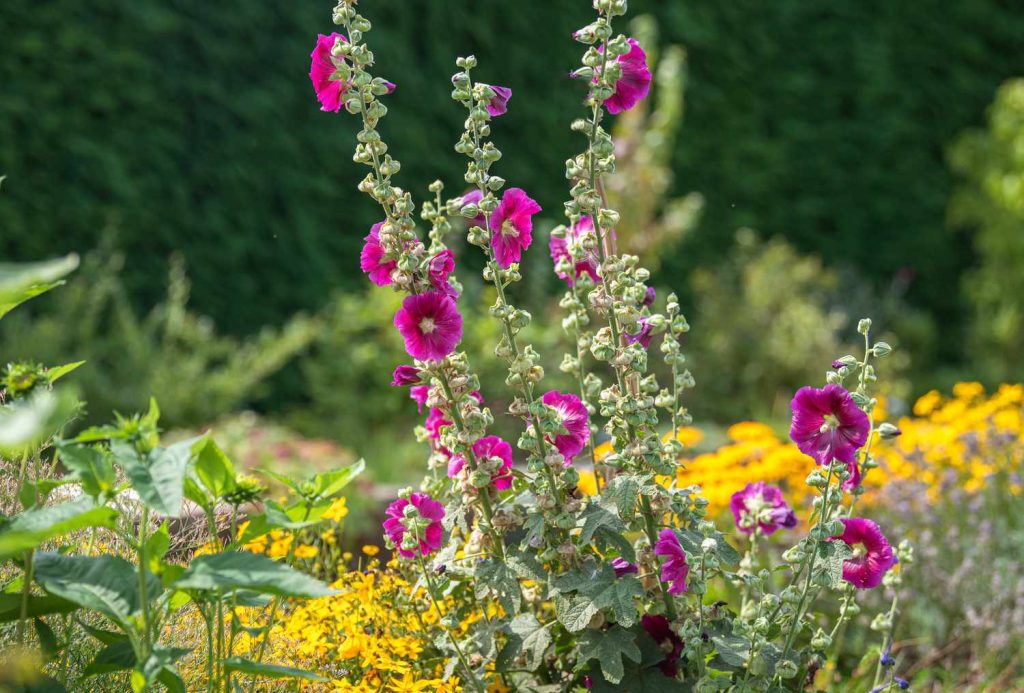
Hollyhock is a tall, biennial or perennial plant that produces impressive flower spikes in shades of pink, red, yellow, white, or purple. The flowers are attractive to hummingbirds and add vertical interest to the garden. Hollyhock prefers full sun and well-draining soil.
– Common Name: Hollyhock
– Scientific Name: Alcea
– Growing Zones: Varies by species
– Sun: Full sun
– Soil: Well-draining
– Colors: Various (pink, red, yellow, white, purple)
– Height: Varies by species
– Spread: Varies by species
– Plant Type: Biennial or perennial
20. Trumpet Creeper (Campsis radicans)
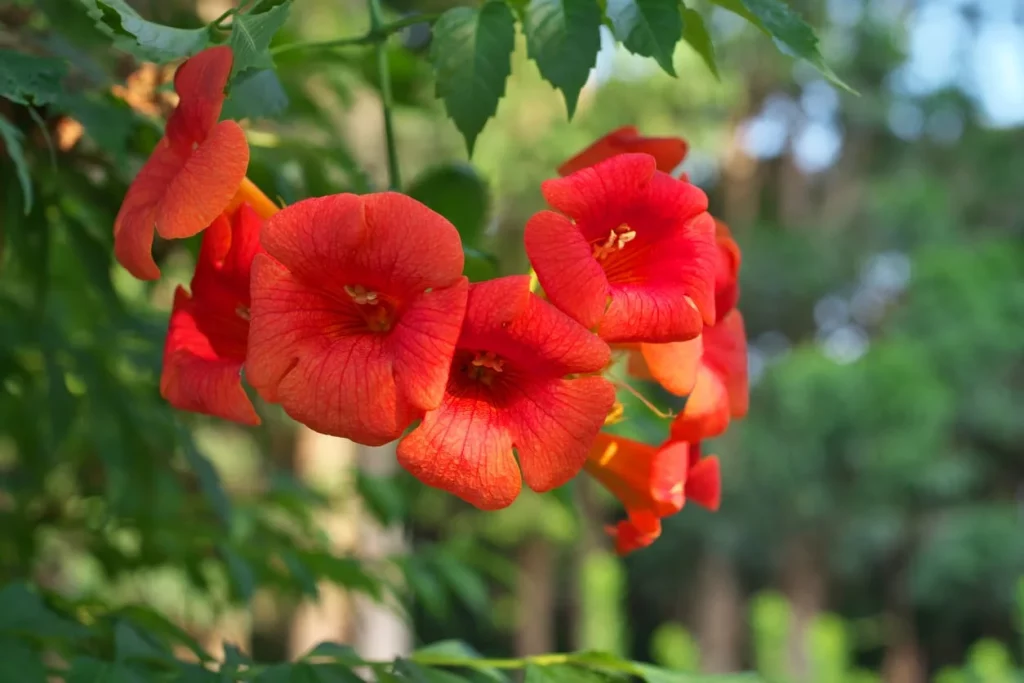
Trumpet Creeper, also known as Cow Itch Vine, is a vigorous, deciduous vine that produces tubular flowers in shades of orange or red. The flowers are highly attractive to hummingbirds. Trumpet Creeper prefers full sun to partial shade and well-draining soil.
– Common Name: Trumpet Creeper, Cow Itch Vine
– Scientific Name: Campsis radicans
– Growing Zones: 4 – 9
– Sun: Full sun to partial shade
– Soil: Well-draining
– Colors: Orange, red
– Height: Up to 40 feet
– Spread: Up to 30 feet
– Plant Type: Vine
These additional plant options will further diversify your hummingbird garden in Minnesota. Remember to choose plants that are suitable for your specific growing conditions and zone.